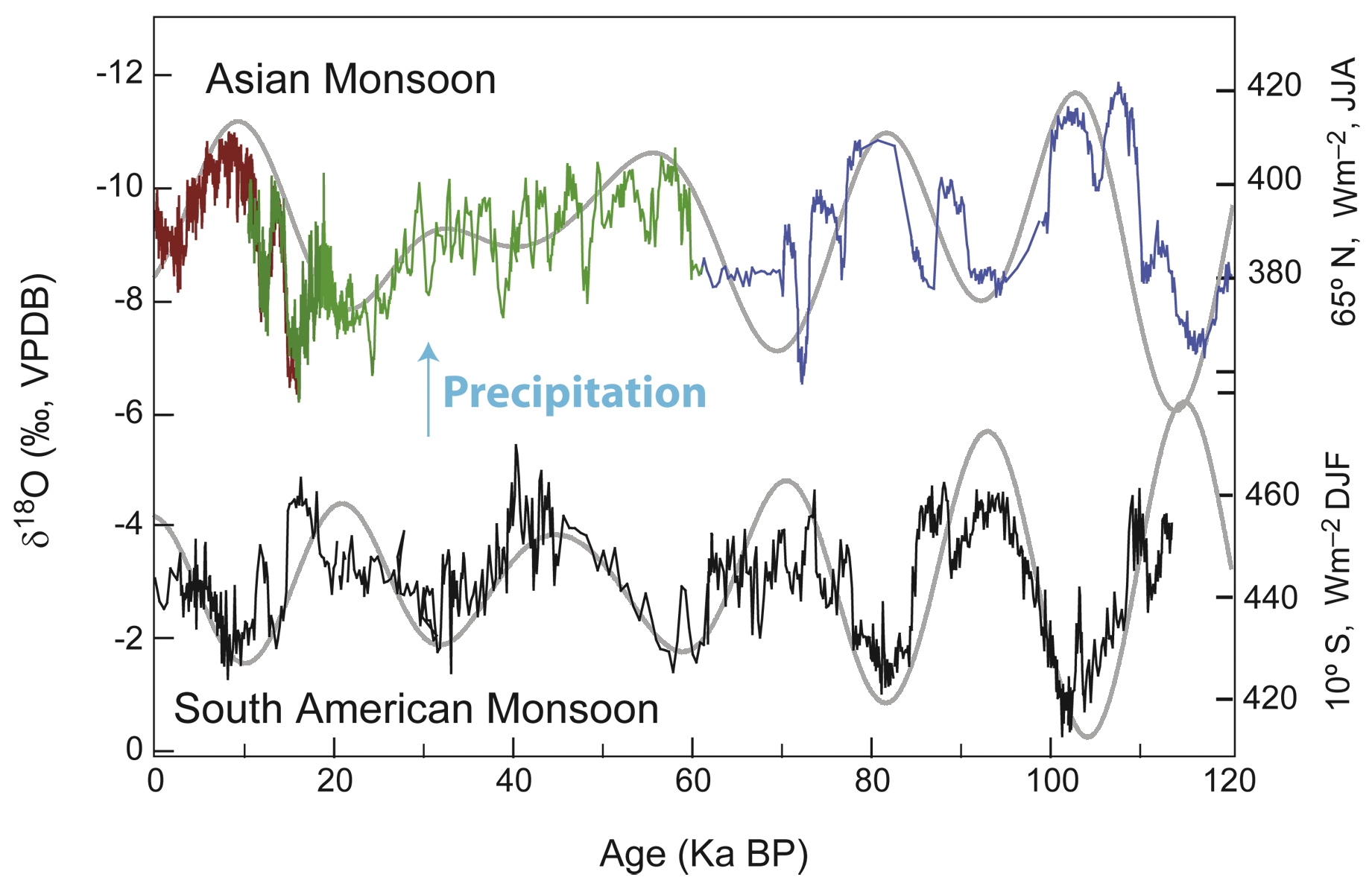- Home
- Publications
- PAGES Magazine
- Linking Monsoon Systems Across Timescales
Linking monsoon systems across timescales
Wang P, Wang B & Kiefer T
PAGES news
19(2)
86-87
2011
Pinxian Wang1, B. Wang2, and T. Kiefer3
1State Key Laboratory of Marine Geology, Tongji University, China; pxwang online.sh.cn
online.sh.cn
2School of Ocean and Earth Science and Technology, University of Hawaii, Honolulu, USA
3PAGES International Project Office, Bern, Switzerland
2nd PAGES Global Monsoon Symposium, Shanghai, China, 13-15 September 2010
Monsoon systems have earned increasing attention from the climatology community over the past decades, yet remain a subject of regional, if not local studies. Following the first Global Monsoon (GM) meeting in 2008 (see report in PAGES news 17(2), 2009), a second meeting was held in an attempt to put regional monsoons into the context of a global system, and to analyze their variations across a range of timescales. A total of 95 participants from 12 countries presented 30 talks and 39 posters.
One focus was the hydrological cycle. In present-day climate, the GM was shown to be coordinated by internal feedback processes such as ENSO variability. An increasing trend in global monsoon precipitation over the last 30 years is attributed to both the effects of global warming and atmosphere-ocean interaction in the Pacific Ocean (B. Wang). However, the link between SST and precipitation is not straightforward (J. Fasullo). In his keynote, Peter Webster showed that the area of the SST-defined Tropical Ocean Warm Pool (using a fixed criterion of 28°C) increased by 70% since 1920 and is expected to occupy the entire tropical ocean in 2100. However, when related to the column integrated heating, the area of the “dynamic warm pool” remained almost unchanged as it is determined by the SST gradient.
Combined data and modeling were used to address monsoon-related hydrological processes, e.g., to demonstrate how monsoon and deserts coexist as twin features of multi-scale forcing (G. Wu). Vegetation feedback modeling simulated that afforestation in monsoon regions cools summers, warms winters and increases spring-summer precipitation locally, but can affect remote climate into an opposite direction (Z. Liu). The use of transient climate simulation in Africa successfully simulated the abrupt start of the African Humid Period in the Sahel and revealed its connection with North Atlantic climate (B. Otto-Bliesner).
The Symposium covered the full range of timescales. Solar cycles, for example, were suggested to have direct and indirect effects on monsoon variations at multi-decadal and centennial timescales (J. Nott; W. Soon), while on centennial timescales the GM strength seems to respond more to the effective solar forcing (J. Liu). Monsoon records from Asia, Africa, and South America could be correlated globally (R. Tada; R. Schneider; F. Cruz; L. Peterson) and compiled oxygen isotope sequences of stalagmites from Asia and South America reveal anti-phasing on orbital, millennial and centennial timescales (H. Cheng; Fig. 1). This provides strong evidence that the GM is connected across hemispheres by the seasonal migration of the ITCZ in response to asymmetrical heat budgets. Global correlation of monsoon records enables us to indentify specific regional features, as demonstrated by the distinct response of the African and Indian monsoons to fresh water flux and ice-sheet forcing during the last glacial (P. Braconnot). On tectonic timescales, steepening of tropical zonal and meridional SST gradients was called upon to explain the aridification of Africa from 2.8-1.6 Ma (P. deMenocal), coherent with the above-mentioned monsoon-desert coupling.
Interesting discussions unfolded over monsoon proxies. The hydrogen isotope ratio of fossilized plant wax lipids from marine sediments was presented as an indicator of monsoon precipitation (R. Schneider). Several proxies were proposed to reflect the global monsoon intensity on longer timescales, including inorganic marine carbon isotopes (eccentricity cycles in ocean carbon reservoir), atmospheric methane concentration (tropical wetland extent) and oxygen isotopes of ice-trapped air (Dole effect). The similarity between oxygen isotope records from stalagmites and marine planktonic carbonate in monsoon regions provoked the question whether the oxygen isotope composition of the rainwater had fluctuated together with the GM intensity (P. Wang).
Extreme hydrological events were the final topic of the symposium. A variety of approaches, including sedimentological, geomorphological and isotopic, were introduced to study floods, droughts, and cyclones over the last millennia in Australia and India. Increases in flood frequency were found over the last century, suggesting coherence in the long-term history of the Australia-Asia Monsoon (V. Kale; E. Valentine and B. Wasson).
In summary, the symposium provided not just a global view of regional monsoons, but also a new perspective of the regional monsoons as part of a global system. Just as the high-latitude processes are centered around the poles, so are the low-latitudes processes, represented by monsoon and ENSO, centered at the climatic equator, i.e., the ITCZ. The GM responds directly to external forcing and is modulated by high latitude processes through teleconnections. The next step of the PAGES Global Monsoon Working Group will be a Special Issue of Climate Dynamics followed by a synthesis paper.
references

